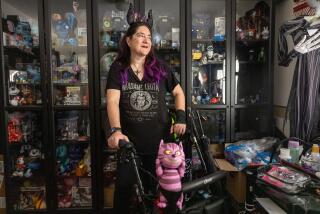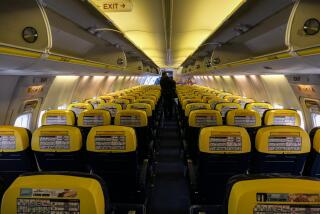Traveling With Disabilities
Fourteen-year-old Wilson Buswell has braved the Hawaiian surf, skied the Colorado Rockies, rafted down a Utah river and toured the country by car. That Wilson is wheelchair-bound hasn’t kept his family at home.
“We’ve always thought Wilson should have the same kind of adventures as our other two kids,” said Barbara Buswell, who lives in Colorado Springs, Colo., and is director of a state support program for families of children with disabilities. “I don’t want to limit Wilson. That’s how you learn about life.”
That’s why the Buswells have pulled Wilson’s wheel chair through the sand and carried it up hills, down rivers and through strange cities. “The night before I leave, I always think I’m crazy,” Buswell said, laughing.
It used to be that these children simply stayed home because travel was difficult. Wheelchairs wouldn’t fit in hotel bathrooms. High curbs made city strolls impossible. But thanks to the 1990 Americans with Disabilities Act (which mandates accessibility) and a generation of determined parents, families are taking to the road: toting wheelchairs and crutches and medicines, as they camp, ski and head to resorts and hotels.
“People are more than willing to accommodate you if you explain what you need,” said Mission Viejo resident Joan Stoddard, who traveled the country with her son Troy, who has cerebral palsy. Now a 22-year-old college student, Troy has become such an adept traveler that he makes solo journeys.
“There have been more changes, than just the law. It’s a real change in attitude. The public is much more welcoming now,” said Stanley Klein, a psychologist and editor of “Exceptional Parent” magazine, which devoted much of its April issue to travel.
Klein’s advice for traveling with a disabled family member is to contact the National Parent Network on Disabilities (tel. 703-684-6763) for the name of a local parent group in the area to be visited. They offer advice on a variety of issues: from finding a baby-sitter who can care for a disabled child to finding specially equipped playgrounds. “Call ahead,” Klein said, stressing that good planning--and asking lots of questions--is key to a successful trip. (For information about the monthly magazine, call 800-E-PARENT.)
“There are now hundreds of outdoors recreation activities for these children and their families to do together.” This includes everything from skiing to sailing to snowmobiling to wind-surfing, said Ed Harrison, a spokesman for National Handicapped Sports, a nonprofit organization that promotes sports accessibility for people with disabilities (tel. 301-217-0960).
Take the granddaddy of them all: the National Sports Center for the Disabled in Winter Park, Colo. Their program began nearly 25 years ago to provide learn-to-ski programs for children with leg amputations. Since that time, it has grown to be the largest ski program of its kind in the world. It now serves 3,000 disabled skiers each winter--60% of them kids--said founder and director Hal O’Leary.
In California, the Tahoe Handicapped Ski School also offers winter and summer programs (tel. 916-989-0402).
The summer Winter Park program provides everything from wheelchair-accessible camping to mountain biking and rock climbing for the blind (tel. 303-726-5514). “It makes them realize they’re not limited and that carries over to all parts of their lives,” O’Leary said.
For families who prefer less organized forays into the wilderness, there are national parks. Many now have at least one trail accessible to those with disabilities and accessibility is improving all of the time, said Wendy Roth and Michael Tompane, co-authors of the excellent paperback “Easy Access to National Parks” (The Sierra Club, $16).
More to Read
Sign up for The Wild
We’ll help you find the best places to hike, bike and run, as well as the perfect silent spots for meditation and yoga.
You may occasionally receive promotional content from the Los Angeles Times.






